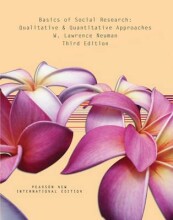Survey Research - Constructing the questionnaire - Open versus closed questions
9 important questions on Survey Research - Constructing the questionnaire - Open versus closed questions
What is a closed-ended (structured, fixed-response) question?
What are the advantages of closed questions?
- It is easier and quicker for respondents to answer.
- The answers of different respondents are easier to compare.
- Answers are easier to code ans statistically analyze.
- The response choices can clarify question meaning for respondents.
- Respondents are more likely to answer about sensitive topics.
- There are fewer irrelevant or confused answers to questions.
- Less articulate or less literate respondents are not at a disadvantage.
- Replication is easier.
What are the disadvantages of closed questions?
- They can suggest ideas that the respondent would not otherwise have.
- Respondents with no opinion or no knowledge can answer anyway.
- Respondents can be frustrated because their desired answer is not a choice.
- It is confusing if many response choices are offered.
- Misinterpretation of a question can go unnoticed.
- Distinctions between respondents answers may be blurred.
- Clerical mistakes or marking the wrong response is possible.
- They force respondents to give simplistic responses to complex issues.
- They force peopple to make choices they would not make in the real world.
- Higher grades + faster learning
- Never study anything twice
- 100% sure, 100% understanding
What are the advantages of open questions?
- They permit an unlimited number of possible answers.
- Respondents can answer in detail and can qualify and clarify responses.
- Unanticipated findings can be discovered.
- They permit adequate answers to complex issues.
- They permit creativity, self-expression, and richness of detai.
- They reveal a respondent's logic, thinking process, and frame of reference.
What are the disadvantages of open questions?
- DIfferent respondents give different degrees of detail in answers.
- Responses may be irrelevant or buried in useless detail.
- Comparisons and statistical analysis become very difficult.
- Coding responses is difficult.
- Articulate and highly literate respondents have an advantage.
- Wuestions may be too general for respondents who lose direction.
- Responses are written verbatim, which is difficult for interviewers.
- A greater amount of respondent time, thought and effort is necessary.
- Respondents can be intimidated by questions.
- Answers take up a lot of space in the questionnaire.
Which two types of errors can you make regarding nonattitudes and the middle positions?
What is a quasi-filter question?
What is a full-filter question?
What is an open (unstructured, free-response) question?
The question on the page originate from the summary of the following study material:
- A unique study and practice tool
- Never study anything twice again
- Get the grades you hope for
- 100% sure, 100% understanding































